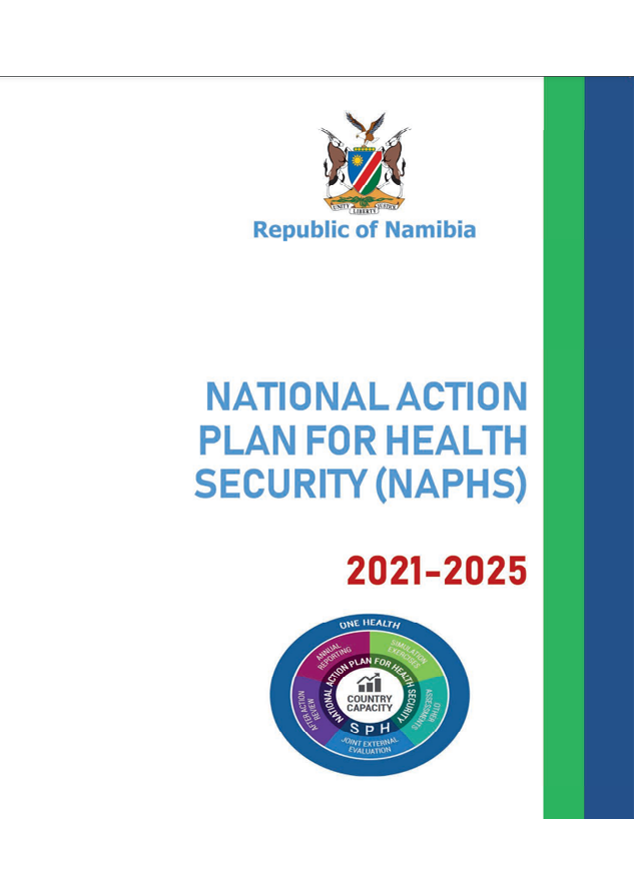Namibia, like several Member States in the WHO/AFR region, is committed to implementing the WHO IlIR Monitoring and Evaluation Framework. This includes the voluntary Joint External Evaluation (JEE) of IHR core capacities that should be followed with a national action plan to achieve and sustain core capacities. Since adoption of the International Health ReguJations, Namibia has carried out several assessments of country capacity to prevent the likelihood and reduce the consequences of outbreaks and other public health hazards, and build national capacities for early detection and effective response to public health emergencies and other events of public health concern. To fulfil Article 54 of the IHR 2005, Namibia conducted the JEE in December 2016. Of the 48 indicators assessed, 8 (16.6%) were rated Green (Demonstrated/Sustainable Capacity), 24 (50%) Yellow, (Limited/Developed Capacity), and 16 (33.3%) Red (No Capacity). The JEE highlighted the commitment of the government of Namibia to strengthen health security, the importance of national financing for sustainability and the role of parliaments in national funding decisions, the key role of community engagement, private sector engagement and the importance of resilient health systems in health security. The meeting further emphasised that strong government ownership, leadership and advocacy are needed. Furthermore, continuous active partnerships of all sectors are required to develop and implement the NAPHS and to fill identified resource and financial gaps.
Republic of Namibia: National Action Plan for Health Security (NAPHS 2021-2025)
Published date
Oct 2023
Countries
Resource types
Strategy document
